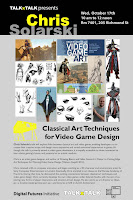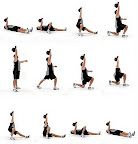 |
| Click to enlarge |
|
Please note: class will be starting at 12:45 and going straight through to 3:00 (no breaks) to accomodate those who want to go to the OCAD presentation of Chris Solarski -- see info:
-------------------------------------
Animation speed drill o' the day: start your
character lying on the ground and have him get up to a standing
position. See "Turkish Get Up" exercise for further study.
 |
Turkish Get Up - a few of these will give you a lot of information.
Don't drop the weight on your head! |
|
--------------------------------------
Walk Cycles, continued:
We'll pick up where we left off last week with Dan showing you how to create cycling animation from live mocap data. Remember that this assignment requires more than just a 'generic', vanilla walk. It must have
character. So, once you're finished cleaning up the data and bringing it into Maya, your real animation work begins.
When analyzing mocap data for your walk cycles, you'll have to hunt for all the key positions that give the character weight, such as the ones pointed out in this Muybridge image on the left. Note that even video reference may be missing vitally important details.
 |
| All 3 of these walk cycles use the same base animation. |
You can alter cycles to give them more attitude and character - some great tools to help you with this are the
graph editor and
animation layers. Having great control over your curves in the graph editor is great for editing cycles, in fact, I'd say it is essential. Remember from last year that precision is the key to a smooth cycle. The foot slide must be linear and cover exactly the same distance as the forward motion. All the tangents must be working correctly and there must be no pops or sticky spots in your screen arcs. Animation layers are very powerful for non-destructively building more subtle motion on top of a basic piece of animation. In the Eleven rig examples pictured, the original 'vanilla' walk was turned into a snappy, happy walk and a more hesitant, scared walk using layers without altering the original base animation.

For more practice, Digital Tutors has a course on
Creating Walk Cycles in MotionBuilder.





No comments:
Post a Comment